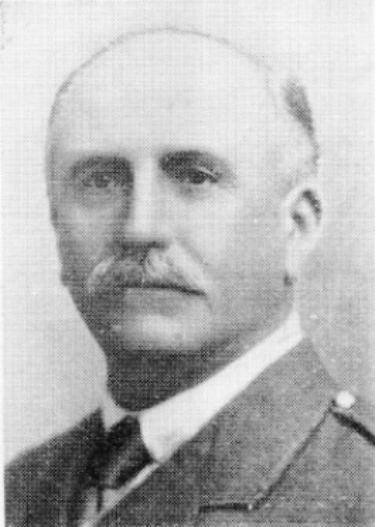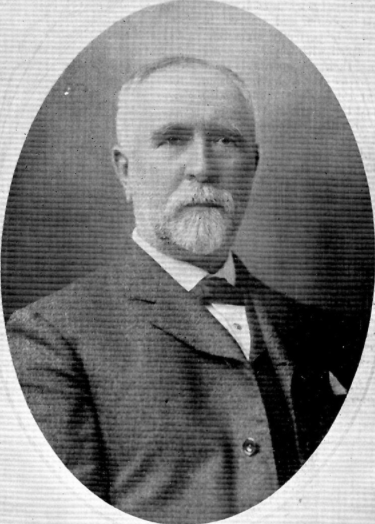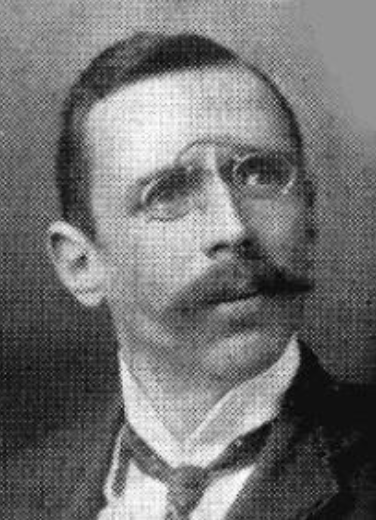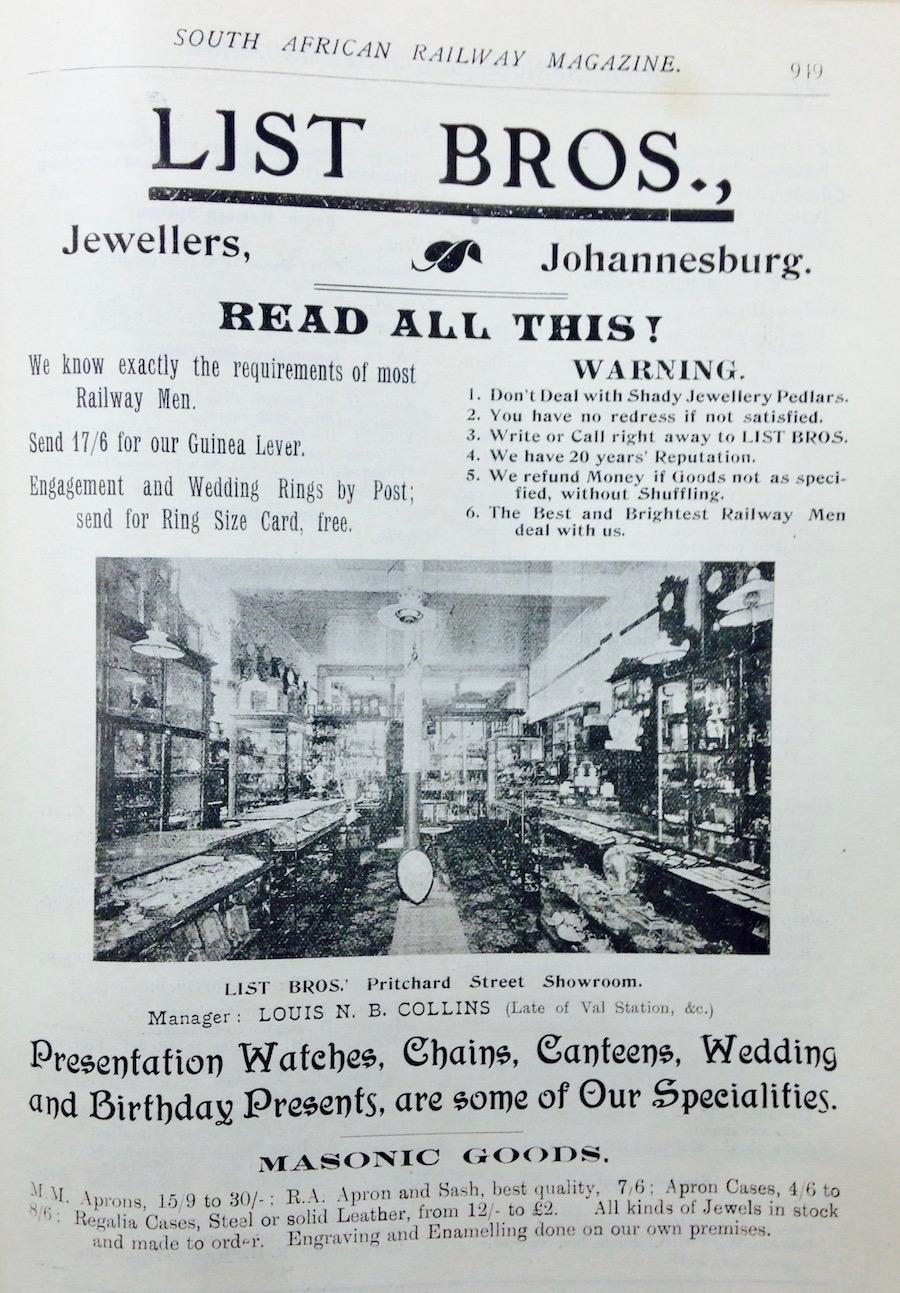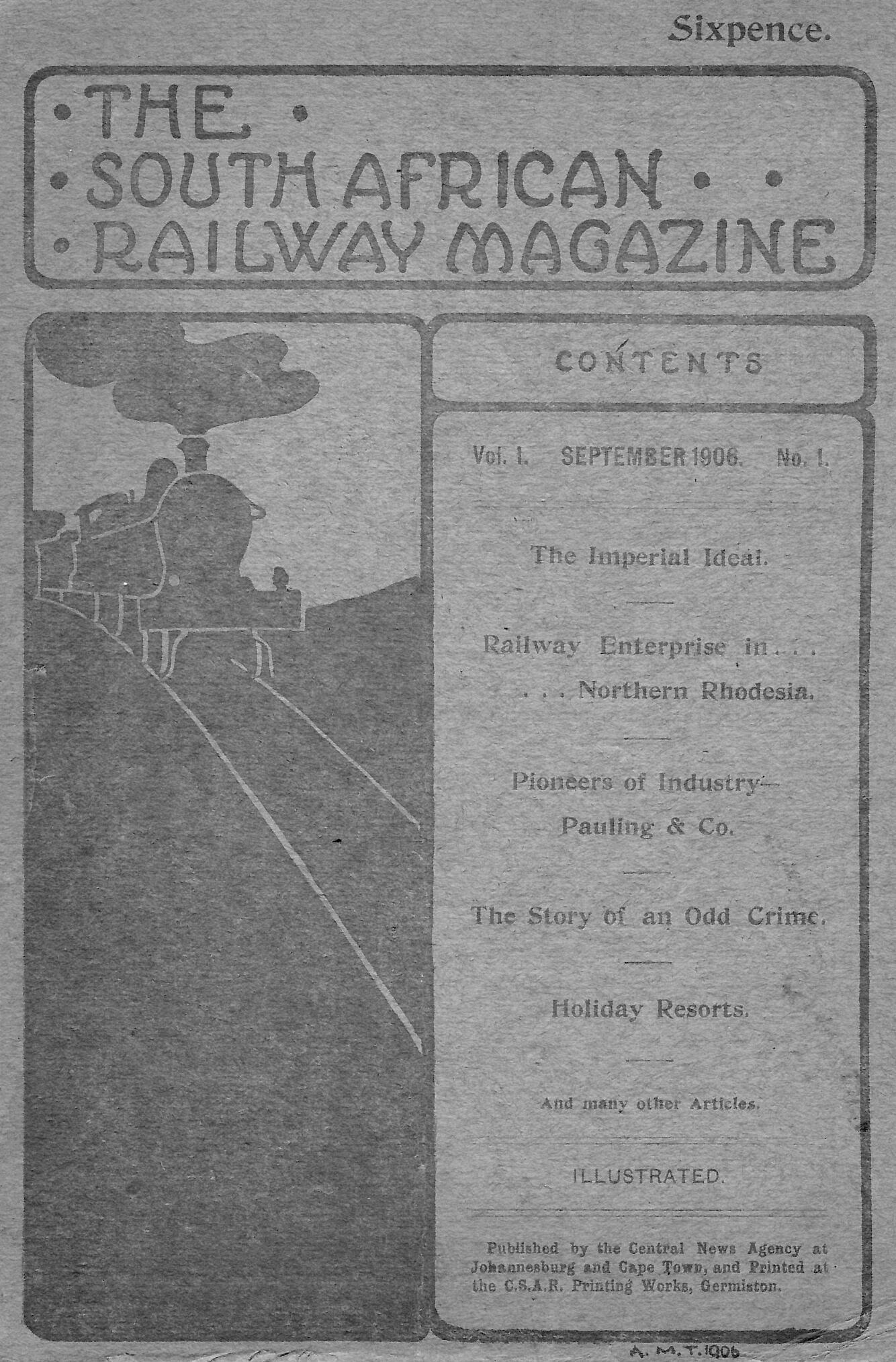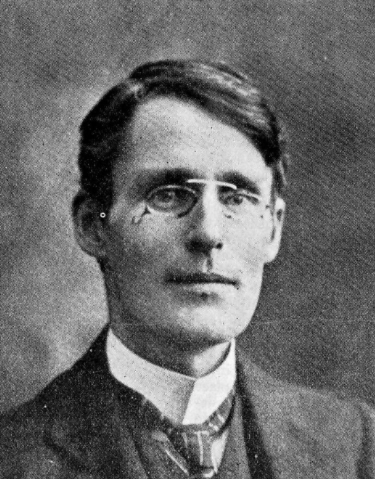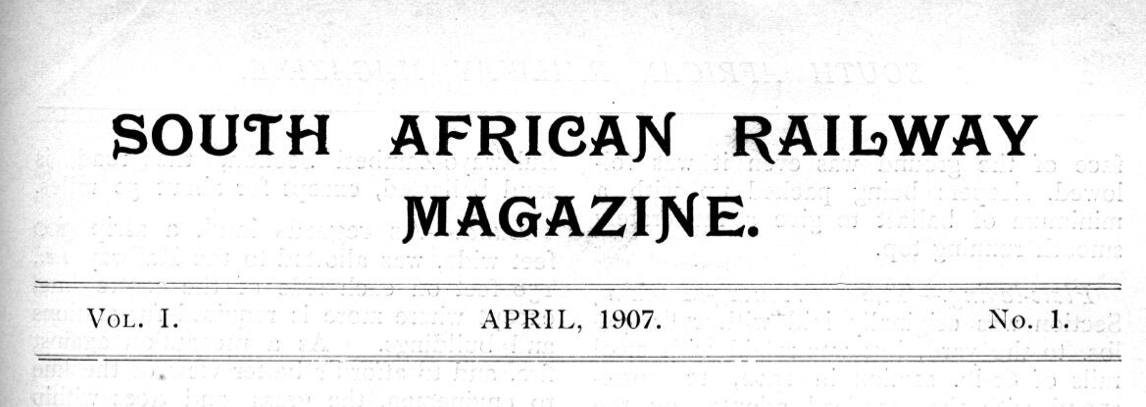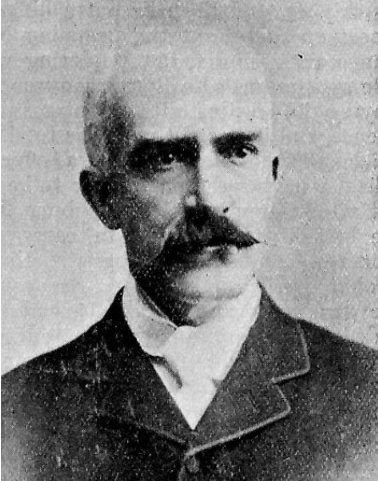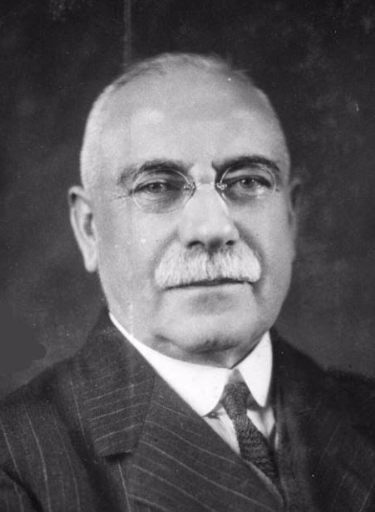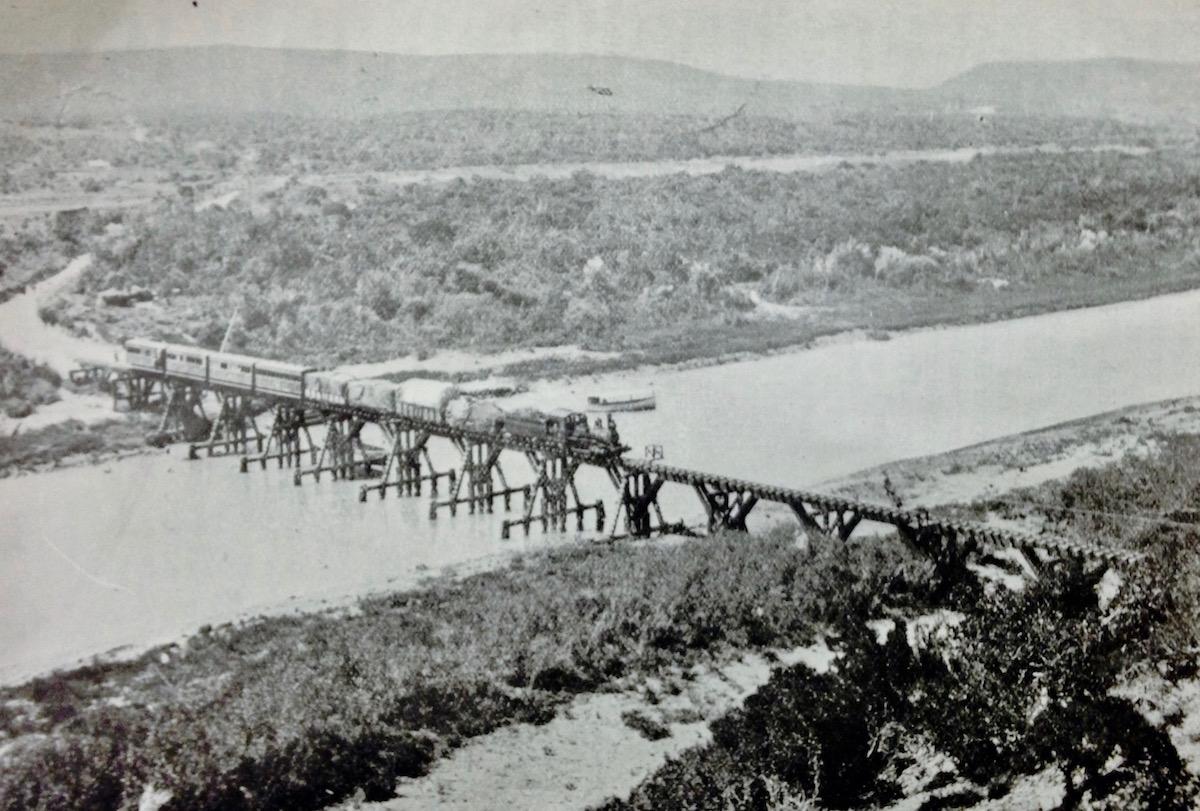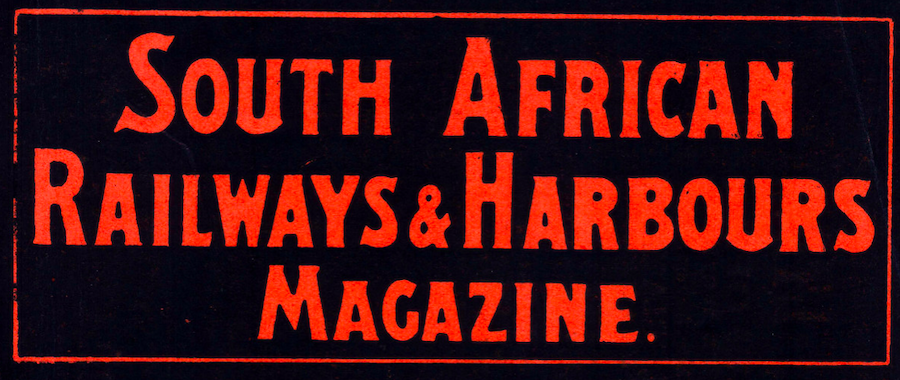
Disclaimer: Any views expressed by individuals and organisations are their own and do not in any way represent the views of The Heritage Portal. If you find any mistakes or historical inaccuracies, please contact the editor.
The SAR&H Magazine (South African Railways and Harbours) traces its origin to the Natal Government Railways Lecture and Debating Society, formed in the early 1890s in Durban. In December 1904, John McConnachie, the Chairman of the Society and a District Superintendent of the Natal Government Railways (NGR), forwarded a suggestion by a colleague HC Richardson, in a letter to the Secretary, AH Tatlow:
It has been suggested to me that the time is rapidly approaching when a railway periodical should be started here, wherein officials could discuss railway affairs and interchange ideas.
Mr John McConnachie (1862-1936), Chairman of the NGR Lecture and Debating Society.
After consulting widely, both locally and internationally, Tatlow developed a proposal with likely production volumes and printing costs. The proposal was supported by the NGR General Manager, Sir David Hunter, culminating in the first monthly issue of the Natal Government Railways Magazine in October 1905, with Tatlow as editor. This issue, with a modest 20 pages, circulation of 1200 and costing a sixpence, marked the official start of railway journalism in South Africa.
Sir David Hunter (1841-1914), General Manager of the NGR from 1879 to 1906, credited as the “Father of South African Railway Literature”.
It should be noted that commercial South African specialist publications were a rarity at the time. The first publication of this kind was Gold and Base Minerals in 1891, followed by South African Photographer in 1898 and the short-lived South African Wheels (two issues only) in 1909. The commercial viability of a railway journal was therefore uncertain. But the NGR believed that there was a great need for such a magazine, noting that there were about 30 000 European railwaymen employed in South Africa with “no suitably illustrated periodical through which the ever increasing problems peculiar to the railroad profession on the subcontinent could be ventilated or discussed”, but could only “trust that the usefulness of the magazine will speedily justify its existence”.
AH Tatlow, NGR and SAR editor from October 1905 to May 1930.
The NGR Magazine was published every month for 18 months until March 1907, until overtaken by other events to be reviewed soon. The first six issues were printed by Singleton & Sons in Durban. After expiry of this negotiated contract, an open tender was won by Robertson & Company for the next 12 issues. In all 18 issues, advertisements were restricted to separate pages at the front and back of each issue. The total number of published pages, excluding the commercial pages, were 707 at an average of 39 pages per issue.
An advertisment page
In the final issue of the NGR Magazine, Tatlow (the editor for its full duration) reflected:
At no time during the conduct of the NGR Magazine have we experienced the slightest embarrassment from a dearth of matter for its pages… With constant watchfulness, and no little amount of work, the journalistic scheme has, up to the present, been successfully conducted… As literary parents, we may be excused a natural pride in our first-born, and we only ask that when in the fulness of time, the next and larger offspring shall arrive, the elder shall not be snubbed…
A Second Railway Magazine
While the NGR Magazine made its modest start, the neighbouring Cape Government Railways (CGR, operating in the Cape Colony) and Central South African Railways (CSAR, since the Anglo-Boer War operating in the erstwhile republics of the Orange Free State and Transvaal) joined forces to start a similar publication, culminating in the first issue of the South African Railway Magazine in September 1906. The NGR, CGR and CSAR consulted beforehand to avoid two simultaneous railway periodicals, but contractual obligations with their respective printers had to be honoured. For the next seven months, it would be inevitable to have both a NGR Magazine and a SAR Magazine.
The cover of the first edition
Being a joint venture between the CGR and CSAR, the editorial duties of the SAR Magazine were shared, with each party responsible for part of the journal, down to separate editorials each month. The first editors were AS Marshall-Hall (CGR) and CW Appleyard (CSAR). Appleyard resigned and was replaced by John R Abbott from January 1907. The Central News Agency was responsible for the collection of subscriptions and distribution of the copies. Their Johannesburg office dealt with the subscribers and contributors affiliated with the CSAR; the Cape Town office with those of the CGR. The copies were printed at the CSAR Printing Works in Germiston.
Mr AS Marshall-Hall, CGR Editor of the first SAR Magazine.
John R Abbott (1873-1909), CSAR editor from September 1906 to April 1909.
A total of seven monthly issues of the first SAR Magazine were produced from September 1906 to March 1907, with a total of 439 non-commercial pages, or 63 pages per issue. In the first issue, the editors announced somewhat uncertainly that they “make no pretence of being other than amateur journalists, nor have we leisure (except such as our evenings afford) to devote to the ‘role’.” The public support for the SAR Magazine appears to have been less satisfactory. In the final issue of March 1907, the CGR editor lamented:
It is earnestly hoped that the new Magazine will receive a fuller measure of support than has been accorded to the present publication, and that the number of subscribers will be largely increased. It is easy to criticise, but if critics would give the editors the benefit of their advice, instead of holding aloof and hostile, we should all reap the advantage.
The SAR Magazine
On 7 and 8 February 1907, a conference was held in Bloemfontein with the objective to amalgamate the existing two magazines into a new SAR Magazine, published jointly by the NGR, CGR and CSAR. The new magazine would have an editor from each party responsible for news from its region. The previous editors (Tatlow, Marshall-Hall and Abbott) were retained. The publication would be overseen by a Joint Inter-Colonial Magazine Committee made up of the three editors with a second representative from each region. Each editor would have about one-third of the pages at his disposal; costs and revenue would be split proportional to the number of subscribers; and each region would take care of its own subscriptions and distribution.
The first issue of the new SAR Magazine appeared in April 1907 with high hopes of its eventual success. Tatlow “rejoiced in the consummation of events which has brought us to such happy state of union”. Sir David Hunter, having retired just the previous year as NGR General Manager, exclaimed:
I am delighted to hear of this practical step in the direction of Railway Federation, following upon the labours of the officers of the various Administrations during the many past years, which have prepared the way for a step so essential, in my judgment, to the well-being of South Africa. The new magazine, like those which are now to be incorporated in it, will of course be non-political, and devoted chiefly to the discussion of subjects of practical common interest, which can be carried on free from any spirit of partisanship of State rivalry.
The first edition
John Abbott, as CSAR editor, added:
If in any country on earth a magazine, such as ours, is a necessary institution, surely that country is South Africa, where the units of railway life are so widely separated from each other. By its means the far-away lonely veld station is kept closely in touch with the centres of railway life, and, truly, the monthly budget of railway news must come to our confreres at these outlying places as a veritable gift of the gods.
The SAR Magazine continued to be published every month for the next years. From April 1907 to December 1910 (an arbitrary cut-off date to separate this section from the following) 39 monthly issues were produced with a total of 3662 non-commercial pages or 94 pages per issue. The printing during these years was done in turn by Mercury Printing Works in Durban, followed by Townshend, Taylor & Snashall in Cape Town. There were two changes in editors during this period. CGR editor Marshall-Hall, who retired in November 1908, was replaced by WT Woolley in March 1908. The management of the printing contracts for the magazine, previously the duty of Marshall-Hall, then fell upon NGR editor Tatlow. A year later, in April 1909, CSAR editor John Abbott died at a youthful 36 years. Sidney C James stepped in on a temporary basis until JC Callaghan was appointed as CSAR editor in October 1909. In the same month, Tatlow became the “controlling” editor while the other editors were relegated to the rank of “sub” editors.
WT Woolley, CGR editor from April 1908.
Unification and after
Unification in 1910, which amalgamated all the previous provinces into the Union of South Africa, effectively dissolved all the existing railway administrations with obvious consequences for the continuation of the magazine. The newly formed South African Railways was fortunate to get the relatively youthful, energetic and very able William Wilson Hoy as General Manager, who had to build a new national railway company from the parts of the previous, a complicated process that took a few years to complete. From the start, Hoy put his full weight behind better publicity, locally and internationally, for the SAR. The continuation and strengthening of the SAR Magazine was a logical extension of Hoy’s focus and he, along with Sir David Hunter, were later considered to be the key players in the continued success of the magazine. A SAR Publicity Department was established in Johannesburg and the publication of the SAR Magazine became one of its responsibilities. Tatlow was relocated from Durban to become the Manager of the SAR Publicity Department and thereby also the Honorary Editor of the SAR Magazine. The principle of regional editors fell away, as the “unification of the railways renders a plurality of editors unnecessary”. Woolley retired in May 1911, while Callaghan had only been the CSAR editor for a few months before Unification. By the end of 1911, the magazine’s success was such that CH Graham was appointed to the new position of Editor to assist Tatlow. From 1911, the printing was taken over by the Argus Company of Johannesburg.
Sir William Hoy (1838-1930) first SAR General Manager 1910 to 1928.
In 1913, with stability setting in after the changes brought by Unification, Tatlow reviewed the status of the SAR Magazine. He pointed out that the first issue of the NGR Magazine had a circulation of 1200; the SAR Magazine in October 1913 had 6000. He justified the continuation of the SAR Magazine on two counts. Firstly, the magazine should continue to report the contributions made by the railway staff and to record the anecdotes from earlier years “however slender”. “We cannot trust the frail cargo of memories to oral tradition.” Secondly, it served its readers in their professional work:
Railway-making and railway-working are a world in themselves, something apart from all other commercial enterprises. It has its own language to a considerable extent, and it might also be said that it has its own literature, and it is because of this we contend that with energy and enthusiasm wisely directed an even more splendid sphere of usefulness lies in the track of the SAR Magazine in the time to be.
The SAR Magazine (from January 1914 the SAR&H Magazine after the harbours of South Africa were integrated with the railways) went from strength to strength. The page count steadily climbed to about 100 non-commercial pages per issue, with a bumper issue every December with about double the number of pages. During the 1920s, a number of changes affected the management of the magazine:
- 1923: The printing of the magazine by the Argus Company in Johannesburg came to an end and was taken over by Hortors Ltd, also in Johannesburg.
- 1925: Editor CH Graham retired in August, handing over to CS Stokes.
- 1926: Afrikaans contributions started to appear. The printing of the magazine was taken over by Technical Press in Johannesburg.
- 1928: William Hoy retired, succeeded by JR More. JR More continued the tradition of strong support by management.
- 1929: Editor CS Stokes retired in September, to be succeeded by H Miles.
- 1930: Honorary Editor AH Tatlow retired in May after being a driving force behind the magazine for 25 years, to be succeeded by NB Hewitt. At the same time, the Publicity Department was amalgamated with the Tourist and Travel Branch to form the Publicity and Travel Department, with Hewitt as Manager.
At the end of 1930, after its first 25 years, the editor reflected:
The bound volumes in the Editor’s office now cover approximately eight feet of wall space, while over 30 000 pages have been composed under the journal’s title. From being a small journal for railwaymen in the Garden Colony, it has grown to be what is probably the largest monthly publication, in point of size and circulation, that is produced and sold in South Africa. It has, moreover, come to be acknowledged as one of the leading publications of its type in the world.
The SAR&H Magazine continued to be published every month in the same format for a further 37 years up to March 1967, before it was renamed and reformatted as the SASSAR Magazine.
Its Importance to Historians
In short, the magazine offered a running report on the development of South Africa from 1905 to 1967, profusely illustrated with photographs. Although it naturally had to focus on the development of railway technology in general and South Africa’s own progress in particular, it offered a much broader picture of the country’s general economic development – new industries, agricultural and mining outputs, and the multitude of other determinants which affected the need and problems of rail transport. Its other main aim was to market South Africa as a tourist destination and therefore produced a constant stream of articles on almost all the towns and cities in South Africa, its peoples, scenery and its chequered history. For the transportation aficionados, it is a fount of technical details regarding rolling stock, construction, rates, harbours, aircraft and airports, etc. This list is endless.
Despite its large and wide circulation, there are very few libraries in South Africa to hold complete collections of the magazine. Most of the available issues are in the hands of private collectors and railway clubs, therefore not readily available to academic researchers at universities. For this reason, the Transnet Heritage Library and some private collectors supported an initiative to make their holdings available for digitisation and publication on the internet.
The magazines are full of priceless photographs. Here a train crosses the Gamtoos River Bridge (July 1907 Edition)
Access Through the Internet
The DRISA Project is a volunteer project since 2014 which aims to digitise and publish the unique materials in the Transnet Heritage Library in Johannesburg on the internet (click here to view). It recognises that there are three types of materials that should be digitally archived: original photographs, original documents, and the SAR&H Magazine. The digitisation of the magazine started with the earliest issue in 1905 and is working its way forward. The completed materials are published in blocks of five years. The latest block covering 1941-1945 was published in November and a new block is added about every six months. About 60 000 pages have been published and about as many remain to be processed.
The DRISA Project is guided by a memorandum of understanding between the South African Institution of Civil Engineering (SAICE) and Transnet Freight Rail (TFR)
A powerful feature of digitised materials is the ability to search for specific words or phrases, using optical character recognition (OCR) software. This feature was incorporated into the DRISA Magazine platform. For the first few years, until about 1920, the age, poor paper quality and poor quality of printing prohibited the extraction of perfectly “clean” text from the scans and the text recovery is in the region of 50%. Thereafter it rapidly improved to 90% or better. Despite this shortcoming, it is a powerful tool in the hands of a researcher.
To use the facility, go to www.drisa.co.za; select Magazine Collection and click through to get to the DRISA Magazine Platform. The site can be browsed by the published indexes (provided from 1911 onwards), or by the contents page (the second or third page of every issue), or by selecting from contents in the left sidebar (only provided up to 1926). But by far the most powerful tool is to use the search bar at the top of the page – try it out! No registration is required, you do not need any software other than your internet browser and there is no charge.
Johannes Haarhoff | DRISA Project Leader | Johannes@haarhoff.org.za
Comments will load below. If for any reason none appear click here for some troubleshooting tips. If you would like to post a comment and need instructions click here.

